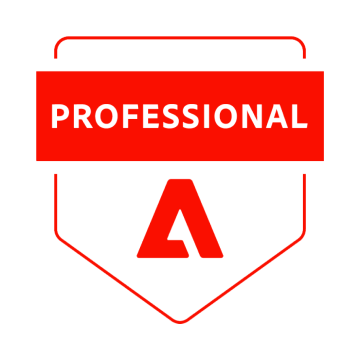Agriculture SEO Services
Search that matches how industrial buyers actually evaluate and buy. We build and run B2B SEO programs that surface your products and services for the exact queries teams use—spec-driven searches, dealer/installer lookups, and maintenance problems. For agriculture and agritech brands, that means sound information architecture, product and parts taxonomy, technical SEO, structured data, and local SEO at scale for dealer networks. We pair this with subject-matter content that covers compliance, safety, and total cost of ownership, mapped to long buying cycles.

Our Offerings
Technical SEO Audit & Fix Plan
Full-stack crawl, render, and log analysis to surface indexation gaps, thin or duplicate pages, and JS rendering issues. We translate findings into a prioritized fix plan with clear owners and expected impact. Typical work includes faceted navigation controls, canonical and robots rules, sitemap hygiene, pagination, hreflang, and error-budget checks for crawl efficiency.
Information Architecture & Parts Taxonomy
We design category trees, filters, and product/parts groupings that match how engineers and procurement teams search. Deliverables include naming conventions, attribute models, canonical filter sets, and URL patterns that prevent page bloat while opening ranking opportunities for spec-, model-, and application-led queries.
Structured Data & Product/Service Schema
We implement and govern schema across Product, Service, Organization, FAQ, HowTo, ItemList, BreadcrumbList, and JobPosting when relevant. For parts catalogs, we map GTIN/MPN/brand, dimensions, compatibility, and availability to improve rich results and feed quality. Validation and monitoring are baked in through automated tests.
Content Strategy for Complex Buyers
We build a content backlog from actual search demand and sales objections: specs, maintenance procedures, troubleshooting, safety and compliance topics, and total cost of ownership. The process uses SME interviews, document mining (manuals, data sheets), and SERP feature analysis to publish pieces that win rankings and support long buying cycles in agriculture and adjacent industrial markets.
Programmatic SEO for SKUs & Catalogs
For large catalogs, we generate scalable pages the right way—query-driven templates, controlled internal linking, deduped variants, and guardrails for thin combinations. We handle canonicalization, noindex rules for low-value facets, parameter handling, and feed alignment so programmatic pages add traffic without polluting the index.
Local & Dealer Network SEO
If you operate through branches, dealers, or installers, we manage Google Business Profiles at scale, build location pages with unique value props, and apply location and service-area schema. We standardize NAP data, citations, UTM rules, and call tracking, then roll up reporting to show impact by market and territory.
How We Bring Value To Your Business
We focus SEO work on the levers that create qualified opportunities and lower acquisition cost.
1
Earlier capture of spec-driven demand
We build pages that match how engineers and procurement teams search—model numbers, standards, performance thresholds, and application language. That coverage pulls buyers into your funnel before they issue an RFQ, and connects cleanly to CRM so sales can act on the signals.
2
Cleaner index, stronger coverage
Through crawl logs, parameter rules, and faceted-nav controls, we cut duplicate and low-value pages that dilute relevance. A tighter index helps the right templates get crawled more often and rank against the queries that matter in long, multi-stakeholder cycles common in energy and heavy industry.
3
Catalog growth without thin pages
For agriculture equipment and parts catalogs, we use query-driven templates, deduped variants, and structured data (MPN/GTIN, compatibility, attributes). This approach expands long-tail reach across models and use cases without cannibalizing primary category or product rankings.
4
Dealer and branch visibility at scale
We manage Google Business Profiles, location pages, and citations so each market shows accurate services, hours, and inventory signals. Calls, forms, and direction requests are tagged back to locations and routed to the right teams, so you see territory-level impact.
5
Faster pages under real-world conditions
Template-level fixes to LCP, INP, CLS, image policy, and script loading make pages hold up on older devices and weak connections in the field. Faster interaction improves documentation views, configurator use, and quote starts—without redesigning the whole site.
6
Revenue attribution sales trusts
We implement an event model in GA4, keep UTM discipline, import offline conversions, and stitch sessions to opportunities. Dashboards show which queries and pages create qualified pipeline, so budgets and priorities are set on clear financial impact.
Challenges We Commonly Solve
Here are the patterns that stall industrial SEO programs — and how we address them.
Ready for a prioritized fix list mapped to revenue impact?
Why Choose WiserBrand
You get an SEO partner that works inside your product, marketing, and sales routines — technical enough to fix the platform, commercial enough to tie work to pipeline.
1
Catalog & architecture expertise
We handle the hard parts: faceted navigation, parameter handling, canonical strategy, and structured data across large SKU sets. Log analysis, template refactors, Core Web Vitals fixes, and programmatic page models are coordinated with your dev team so rankings grow without index bloat. This approach fits agriculture catalogs and dealer networks as easily as it fits complex energy portfolios.
2
Reporting that management can audit
We implement a GA4 event model, disciplined UTM usage, and offline conversion imports, then stitch to your CRM. Looker/BigQuery dashboards show which queries and pages create qualified opportunities by product line, market, and territory — clear enough for finance and sales to align budgets with impact.
3
Embedded, sprint-driven delivery
We work from a prioritized backlog with impact/risk/effort scoring, join standups when needed, and ship in two-to-four-week cycles. You get tickets ready for engineering, content briefs for SMEs, and playbooks for branches/ dealers — steady progress without distractions.
Cooperation Models
Choose an engagement style that matches your internal resources, change control, and timelines.
We plug into your product, marketing, and dev cadence. Work runs from a shared backlog with impact/risk/effort scoring, two–four-week sprints, and clear owners. Typical sprint output: crawl/indexation fixes, template refactors for Core Web Vitals, schema rollouts, programmatic page templates, dealer/location playbooks, and content briefs sourced from SME interviews. We join standups as needed, keep a running RAID log, and report progress against agreed commercial metrics tied to CRM.
A focused project that retires the blockers holding back growth. Scope commonly includes faceted navigation controls, parameter governance, canonical strategy, sitemap and pagination hygiene, Product/Service schema with MPN/GTIN mapping, and LCP/INP/CLS improvements at the template level. We start with a technical audit and log review, implement fixes in batches, validate in Search Console and field data, and hand off a playbook so your team can maintain gains.
For teams that have execution covered but want senior guidance and quality control. We provide quarterly roadmaps, architecture reviews, content and SERP gap analyses, and governance for programmatic SEO and structured data. You get review cycles on major releases, training for product/content/IT, and office hours for rapid decisions on redirects, migrations, and new templates.
Our Experts Team Up With Major Players
Partnering with forward-thinking companies, we deliver digital solutions that empower businesses to reach new heights.
Our Approach
We run SEO as an engineering and go-to-market track, sequenced to ship fixes early and compound gains.
Baseline & Diagnostics
We capture how bots and users experience the site: full crawl, JS render, server logs, Search Console exports, and GA4 events. The output is a ranked issue list (impact/risk/effort), KPI baseline, and a deployment plan that fits your release cadence. No long slide decks—just the work queue needed to move.
Demand Mapping & Architecture
We translate real queries into site structure. That means an attribute model for products/parts, viable filter states, canonical URL patterns, and internal links that guide bots to the right templates. We also document schema targets and data gaps (MPN/GTIN, compatibility, specs) so content and PIM teams know exactly what to add.
Technical Remediation
We close indexation and performance gaps at the template level: parameter governance, canonicals, sitemaps, pagination, and hreflang where relevant. Core Web Vitals fixes cover LCP, INP, CLS with image policy, critical CSS, font loading, and script budgets. We validate in field data and track crawling shifts in logs and Search Console.
Content & Programmatic Build
We ship SME-backed content for specs, maintenance, troubleshooting, and TCO topics, and we generate programmatic pages from demand-led templates — deduped variants, guarded facets, and structured data across Product/Service, ItemList, and Breadcrumb. Location and dealer assets are produced in batches with repeatable briefs and governance.
Measurement, Handoff & Iteration
We wire events to GA4, set UTM discipline, import offline conversions, and stitch to CRM so opportunity creation is visible by query and page. Dashboards in Looker/BigQuery track coverage, crawl health, and revenue signals. We hand off playbooks to your teams and keep a rolling backlog for the next highest-impact releases.
Case Studies
Our case studies highlight the outcomes we’ve delivered and the approaches that made them possible.
Agriculture SEO Services FAQ
Technical fixes can shift crawl and indexation in 2–6 weeks. New content and programmatic SEO usually show traction in 6–12 weeks, with pipeline signals following sales cycles.
Yes. We ship a prioritized backlog with ready-to-build tickets, review PRs, and fit releases into your cadence — no platform rebuild required.
Centralized Google Business Profile governance, unique location pages, consistent NAP/citations, and location/service schema. Reporting rolls up by market and territory.
No. We mine manuals, data sheets, and service docs, run short SME interviews, and produce briefs and drafts your experts can approve quickly.
GA4 events, UTM discipline, offline conversion imports, and CRM stitching show which queries and pages lead to qualified opportunities by product line and region.























